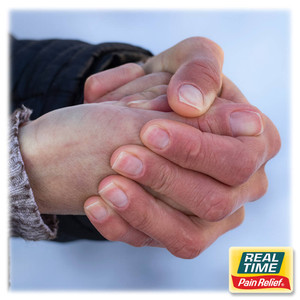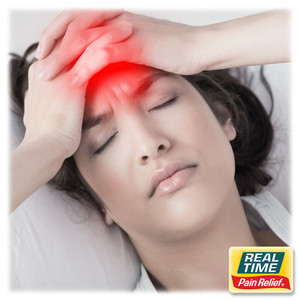Teachers in Pain: Everyday Classroom Strain & How to Prevent It
Posted by Dennis R Escalera on 27th Jul 2025
Introduction
Teaching is one of the most rewarding professions—but also one of the most physically demanding. From standing for hours to bending over desks, writing on boards, and lifting supplies, the daily responsibilities of educators often come with a silent cost: chronic pain. Back, neck, shoulder, and leg discomfort are common among teachers, yet they’re frequently overlooked or managed only when the pain becomes unbearable.
This article explores the causes of classroom-related physical strain in educators, offers practical ergonomic solutions, and highlights how topical pain relief lotions and creams made with nature’s ingredients may help teachers stay comfortable and focused throughout the academic year.
The Physical Demands of Teaching
Unlike office workers, teachers rarely sit for long periods. A typical school day involves:
- Standing or walking for hours on hard surfaces
- Bending and reaching while helping students or writing on boards
- Carrying heavy loads (books, laptops, teaching aids)
- Long hours at a desk grading papers or preparing lessons
- Inadequate classroom ergonomics or outdated furniture
A national study found that over 50% of teachers experience musculoskeletal pain, especially in the lower back, shoulders, and legs.¹ These issues are compounded by long days, limited break time, and few opportunities to rest or stretch.
Common Pain Areas in Teachers
? Lower Back Pain
Caused by prolonged standing, poor posture, and lifting heavy objects without proper support.
? Neck and Shoulder Tension
Results from leaning over desks, looking down at papers or devices, and reaching overhead to write or hang items.
? Leg and Foot Fatigue
Standing on hard floors without supportive shoes can lead to sore feet, shin splints, and even varicose veins.
? Hand and Wrist Strain
Excessive grading, typing, or use of whiteboards can lead to tendon strain or repetitive stress injuries.
Strategies for Prevention and Relief
While pain may seem inevitable in such an active profession, many teachers may reduce or prevent discomfort with a few ergonomic and lifestyle adjustments.
✅ 1. Vary Your Posture
Avoid staying in one position too long. Alternate between standing, sitting, and walking when possible.
✅ 2. Use Supportive Footwear and Mats
Cushioned shoes with arch support and anti-fatigue floor mats may significantly reduce foot and leg strain.
✅ 3. Modify Your Workstation
- Keep computer screens at eye level
- Use document holders to prevent neck strain
- Adjust chair height and posture while grading
✅ 4. Lift Properly
Bend from the knees and use both hands to lift boxes or supplies, avoiding twisting motions.
✅ 5. Stretch and Move
Incorporate gentle stretches between classes or during planning periods to maintain flexibility and reduce stiffness.
✅ 6. Use Ergonomic Aids
Consider tools like rolling carts, standing desks, or back cushions to improve comfort and efficiency.
Relief with Nature’s Ingredients: Topical Creams and Lotions
Despite best efforts, soreness and fatigue are sometimes unavoidable. Fortunately, topical pain relief creams and lotions with nature’s ingredients offer a non-invasive, effective option for on-the-go pain management.
These products work by penetrating the skin to relieve muscle aches, joint pain, and inflammation—without the systemic effects of oral medication. They are ideal for teachers who need fast, discreet relief during or after the school day.
? Ingredients Beneficial for Educators:
- Arnica: Soothes muscle pain and helps reduce swelling.²
- Menthol: Delivers an immediate cooling sensation and reduces tension.³
- Capsaicin: Derived from chili peppers, helps block pain signals for lasting relief.⁴
- Turmeric Extract: Naturally anti-inflammatory and may help relieve joint stiffness.⁵
- Aloe Vera and MSM: Help soothe and nourish the skin while easing discomfort.
These ingredients can be applied to problem areas such as the lower back, shoulders, neck, or feet after a long teaching day.
Realistic Use in the School Setting
Teachers often ask, “Will this interrupt my day?” The answer is no—some pain-relief creams, like those made by Real Time Pain Relief, are non-greasy, fast-absorbing, and fragrance-controlled, making them convenient for school environments. Whether applied before class, during a break, or after dismissal, they provide relief without drawing attention or causing mess.
When to Seek Medical Evaluation
If pain becomes chronic or interferes with your teaching ability, it may be time to consult a healthcare provider. Signs you should not ignore:
- Pain that persists longer than a few weeks
- Tingling, numbness, or weakness
- Difficulty standing or walking
- Swelling or visible joint changes
A physical therapist or occupational health specialist can help design a customized plan for recovery and long-term comfort.
Final Thoughts
Teachers devote themselves to nurturing students—yet often neglect their own well-being. By incorporating ergonomic habits and using topical pain relief made with nature’s ingredients, educators may reduce classroom strain and maintain energy and enthusiasm throughout the school year.
After all, teaching is a full-body job—and pain shouldn’t be part of the lesson plan.
? References:
- National Institutes of Health – Musculoskeletal Disorders in Teachers
https://pmc.ncbi.nlm.nih.gov/articles/PMC11486748/ - Arnica Montana Key Benefits -
https://realtimepainrelief.com/arnica-montana/ - Menthol Key Benefits -
https://realtimepainrelief.com/menthol/ - Capsaicin Key Benefits -
https://realtimepainrelief.com/capsicum/ - Healthline – Turmeric for Inflammation
https://www.healthline.com/nutrition/top-10-evidence-based-health-benefits-of-turmeric - MSM Benefits
https://realtimepainrelief.com/methylsulfonylmethane-msm/





